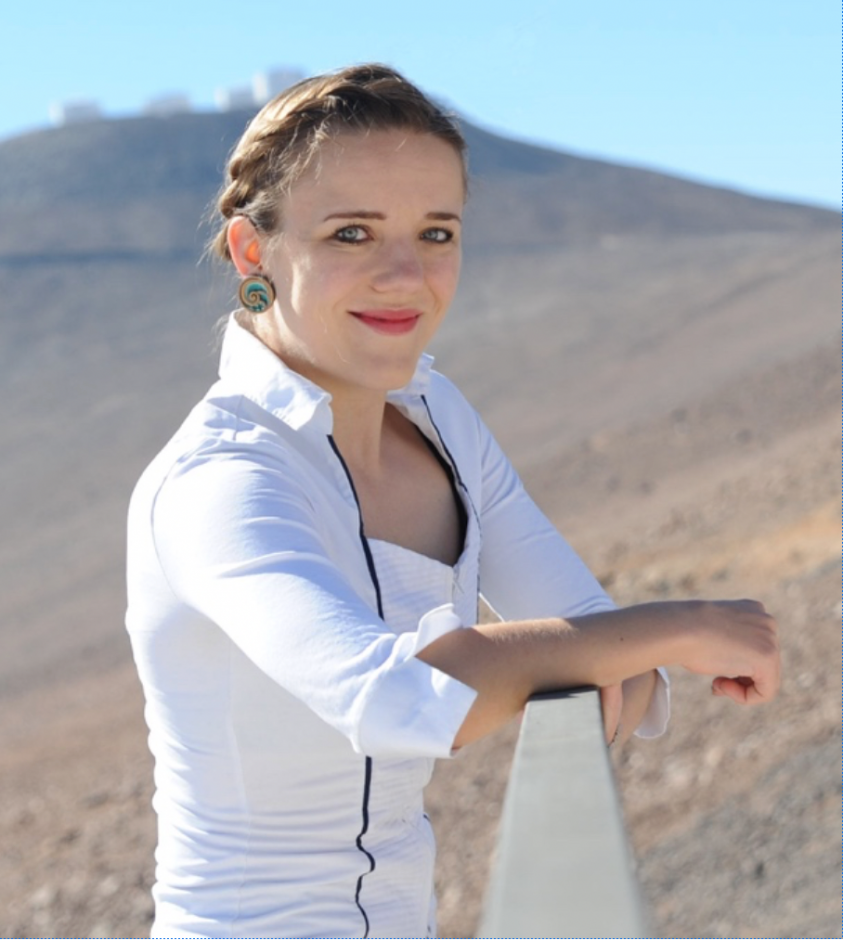2024 MERAC prize awarded to Dr. Julia V. Seidel

The 2024 MERAC Prize for the Best Doctoral Thesis in Observational Astrophysics is awarded to Dr Julia V. Seidel (European Southern Observatory) by the European Astronomical Society for her work on climate and atmospheric circulation regimes of exoplanets from high-resolution spectroscopic observations. Julia V. Seidel obtained her Ph.D. within PlanetS.

Dr Seidel is a researcher at the European Southern Observatory (ESO) based in Santiago and at the Paranal Observatory in Chile.
Dr Julia Victoria Seidel obtained an MSc in Physics from Imperial College London in 2017 and a PhD in astronomy and astrophysics from the University of Geneva in 2021, For this work, she was awarded the 2022 Edith A. Müller award for the best Swiss PhD thesis in astronomy. Since 2021, Dr Seidel is a Research Fellow at the European Southern bservatory (ESO) based in Santiago and at Paranal Observatory in Chile. She dedicates half of her work as a support astronomer at ESO while conducting observational and theoretical research about the atmospheric dynamics of planets, from the extreme climates of ultrahot gas giants to the Earth’s climate and its impact on future astronomical observations.
Dr Seidel is pioneering new observational and theoretical approaches to understand the climates of exoplanets. Her research participates to the characterisation of the physical & chemical properties of exoplanets and their atmospheric evolution. During her PhD thesis she aimed at unveiling the climates & atmospheric circulation regimes of the most extreme exoplanets, exploiting the potential of high-resolution spectroscopy from the ground to study the upper atmospheres of “hot Jupiters”.
Dr Seidel used high-resolution spectrographs such as HARPS at ESO 3.6m telescope or ESPRESSO at the VLT to characterise the atmospheres of known exoplanets. She could resolve a broadened line profile of atomic sodium in the upper atmospheres of a hot gas giant She developed a new model to interpret this signature herself, and used it as diagnostic for high-altitude winds blowing in the thermospheres, i.e., the upper atmospheres heated by the deposition of high-energy radiation from the star. With her new model, Dr Seidel showed for the first time that a combination of super-rotation and vertical thermospheric winds could explain the line shape of the sodium signature. She is carrying out world-class research while serving as a support astronomer and instrument scientist at ESO. She used her background in Earth atmosphere studies to conduct an original study about the impact of climate change and the El Niño phenomenon on telescope sites in Northern hemisphere, with strong implication for the long-term scheduling of telescopes.
The PhD thesis of Dr Julia Seidel was conducted at at the Department of Astronomy of the University of Geneva, under the supervision of Professors David Ehrenreich and Vincent Bourrier.
Original publication of the EAS : https://eas.unige.ch/documents/eas_prizes_2024.pdf
Categories: News

